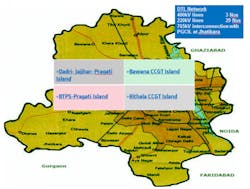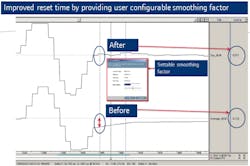In July 2012, 700 million Indians were hit by the two biggest blackouts in the world’s history. To stop it happening again involved islanding and managing the situation with WAMS. The first project started in India’s capital Delhi, where a new algorithm was used to predict any major incident.
The blackouts left no sector of the economy or society unscathed. Miners were trapped underground. Delhi’s already infamous traffic came to a standstill. Nurses had to manually operate equipment to keep patients breathing. We asked Ritesh Bharat, Applications Manager, and Krishnakumar Venkataraman, Product Group Manager for Distribution, about an innovative solution that Alstom proposed to Delhi Transco Ltd to safeguard the capital’s electricity supply in the future.
R.B.: First, it’s necessary to identify and create an island using frequency measurements. If a single island can’t survive, then divide it up. In Delhi we used Alstom MiCOM P14x relays at nine substations for islanding.
If the frequency did not normalise, the system would be further divided into four islands. The survival of the islands depends on load shedding, again based on frequency measurements. This didn’t always work in the past, because relays couldn’t estimate frequencies accurately enough during voltage fluctuations. So we designed a new algorithm that provides a settable frequency-smoothing factor.
The solution was commissioned in October 2013 with around 150 intelligent electronic devices (IEDs) monitoring each node of Delhi's power network, and reporting to an Alstom DS Agile-based wide area monitoring, protection and control (WAMPAC) system. This was used to monitor and control 48 grid substations and the islands, and to manage 5000 MW of power depending upon criticality of feeders, load profile, system stability requirements and load generation imbalance. The solution was also designed to switch on the loads automatically once the frequency was back to normal.
R.B.: We were optimistic when we saw the results of our tests and simulations. Then we had the chance to test it for real. On 30 May 2014, Delhi was hit by a heavy storm that tripped 68 transmission lines in the northern grid. Load loss was happening at 200 MW per minute, resulting in a total loss of about 8,000 MW, including 4,000 MW in Delhi alone. This was the perfect recipe for blackout. But the system survived, in large part thanks to the islanding scheme.
Krishnakumar Venkataraman: Yes, in the rest of India, after the success of Delhi islanding, many utilities have come up with similar schemes. It could prove attractive in developing and emerging economies where generating capacity has trouble coping with significant fluctuations in demand. It could also be beneficial in other situations. For example, the Czech Republic’s 2009 energy policy stipulates that emergency power supply should be ensured in cities with over 50,000 inhabitants, and that power distribution grids should be able to operate as emergency islands supplied by local cogeneration plants.





